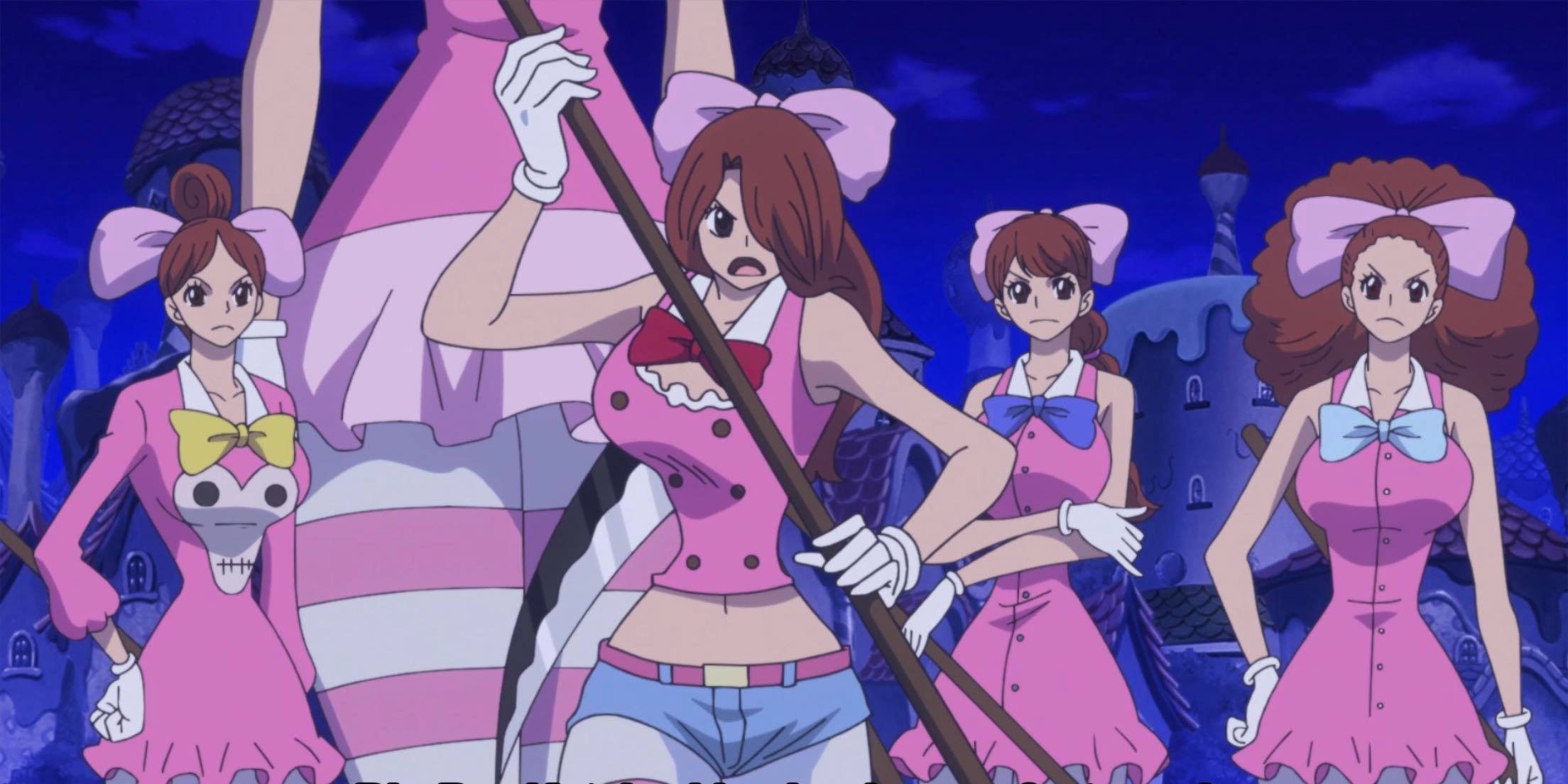
I love One Piece, but I will be completely honest, it’s always been a struggle for this series to show us really well written characters. The obvious critique has always been the way they’ve been drawn, but there’s also been an issue with making too many of them weak and pushing their development to the wayside. Even powerful characters like Robin get very little development after their initial story finishes. Leaders like Vivi don’t have any physical power and are often bullied around. It’s also clear that even crew member Nami hasn’t had a significant upgrade since the time skip (of course, this changed in Whole Cake Island).
I don’t particularly blame Oda for his writing of women, especially in the beginning of the series. Targeted towards young men and being written by a man who initially crafted this idea in middle school, it’s hard to get a full perspective on how to write the opposite sex if it was never your main focus to begin with. That doesn’t mean we continue the streak, and I’m honestly glad that Oda shifts his gaze in this last arc, creating incredibly powerful female characters with complex backgrounds and motives.
Note: This analysis does not include Straw Hat women like Carrot and Nami, since I do plan on going in depth with both of them later.
Big Mom
For starters, we have to address the obvious part of this arc that stood out. Big Mom as an opponent was horrifying for a number of reasons, but knowing that she’s the only female Yonko, I watched her story very closely. She’s the first female character we’ve seen hold a lot of power, but up until now her name has only been dropped a few times before.
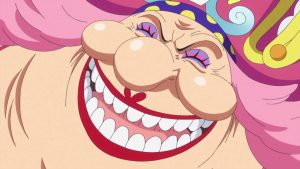
The fine line Oda was going to have to walk with her was making sure that she was terrifying, but not for any stereotypical reasons; this can be hard because there is literally no way to find a new, creative way demonizing a woman that hasn’t already been done before. While there were some problematic aspects of this arc, such as potentially villainizing of bigger women, there were actually certain elements that were creative and flipped social stereotypes on their head. One that really stood out was the fact that Big Mom placed herself in political marriages to gain power, a common aspect for women in stories, but instead used it to her advantage. Instead of one man taking on multiple wives in order to create ties, she would marry them, have children, and kick them to the curb.
This could be interpreted as making a villain out of women who take on multiple partners, women who have multiple children with different fathers or even mothers who have gained custody of their children; a theory that would certainly be supported after meeting Pound. These are all valid analyses, but I also see how clever Big Mom was being. She wanted a world created in her vision and decided to use an old system that was known for being bad for women.
The key thing to remember with Linlin is that she is not supposed to be a good person. She’s a powerful Yonko, she’s literally sucked the souls out of her children, and she planned to kill an entire group of people among the dozens she’s killed before. This is, surprisingly, part of why I like her. One Piece now has a good mix of both good and bad women, as well as a few morally grey ones. The interesting thing about her character is that Linlin actually believes that what she’s doing is right, and that always makes for a great antagonist. As a character with a traumatizing backstory, we now see why Big Mom struggles to find happiness and continues to expand her empire, including why she has so many children. In order to create a perfect world where every person can live a happy, sunshine-filled life, she’s taken it upon herself to contiguously try to recreate the tea party that broke her heart all those years ago; the day she lost Mother Carmel. In a lot of ways, she will always be that lost little girl wishing for her home back.
I can list off the ways that she’s been problematic in more nuanced ways as a personality; from fetishizing different races to creating a world that will only ever fit her image, there’s a lot we could unpack with her. And yet, all of those issues actually work to just make her a better opponent; the more problems, the better. We’re not really supposed to like her anyways. However, we can acknowledge her difficult past and realize why she is the way she is. I admire that she has all of this to her character and that we’re not left with a one-dimensional antagonist for once.
Her Children
Big Mom has a number of daughters working for her fleet. Each one is exceptionally powerful and has their own personality and look that makes them a fully developed character on their own. I’ll admit, I was a little disappointed to see that we couldn’t go through the background stories of characters like Smoothie more in depth, but with how many children Big Mom has, it’s an understandable time restraint.

What I will say is that the daughters of the Big Mom crew are very special in the world of One Piece‘s women. They’re not exactly “villains” or at least, they aren’t the traditional kind. Alongside siblings like Katakuri, it seems like most of the daughters are fighting to keep their family unit surviving. Even if they disagree with their mother, they need to continue living under her rule for their fellow family members. Of course, for sisters Lola and Chiffon, that was a very different conversation, but all in all, whether we can really consider them bad people is a rough concept. What we do know is that they’re exceptionally powerful and there’s a good chance we’ll be seeing them again. My hope is that we’ll be given a good fight with them sometime in the future.
Chiffon & Lola
While Lola was not actively in this arc, she was often brought up and her influence was still there. Chiffon is literally the spitting image of her sister, as identical twins often are, but her personality was also something that reminded me heavily of Lola. Both of them are bright and bubbly despite their awful pasts.
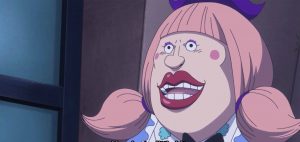
While it wasn’t a focal point for this particular arc, Chiffon as a mother added a very important dynamic to the story. As a mother, she was always ready to set an example for her son to do what’s right. To repay your debts and be strong against anyone, even your own family. That’s a very different tale than the kind of story Big Mom spun for her children. She made family the most important thing, but more for the aspect of loyalty to her and her dream. She was also willing to betray anyone, not really having any allies in terms of trust. Chiffon takes the horrific past she endured and made it a lesson to raise Pez better. There was also the aspect that freedom is always within reach, no matter how hard it may seem. Showing Pudding that she could choose to leave and be happy like Lola was super important for her development. Whether or not she will leave is unknown, but we can only hope that she’ll find a happiness like her sisters.
Reiju
Reiju was a very big part of this arc. While I do believe she held a very stereotypical role, the comfort in a group of raging men, I actually wasn’t upset over it; in the context of backstory and her own personal development, it actually made sense. For one, I’ve found this to be relatively common. For men like Sanji, who’ve been abused by overly toxic, masculine men, women are people that they can relate to because, both historically and in their everyday lives, they’re constantly hurt by men. You can say that’s reading too much into it, but I’d disagree. The whole point of Sanji’s arc is that it describes many of his character attributes, including the woman-loving aspect (or that’s at least one interpretation). It’s also clear that Judge is the pinnacle of toxic masculinity, as he often shames Sanji for not being tougher, manlier. Calling him emotional and soft? That’s a super toxic man thing to say.
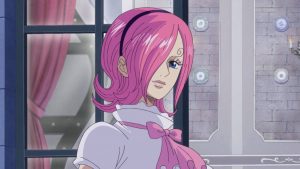 Of course, Reiju’s whole existence in this arc was certainly more to showcase her brother’s backstory, something that’s important to keep in mind. There are some issues I take with it in terms of the fact she can never leave her situation; something plenty of women in the real world can’t do. Sanji, on the other hand, does get to leave. Again, this is just showing the parts of Reiju that I’d say don’t exactly change from many of the other women in One Piece that have typically been placed in a role like hers. We can talk about her physical strength all day long, but she clearly doesn’t feel strong enough to leave her family (yet).
Of course, Reiju’s whole existence in this arc was certainly more to showcase her brother’s backstory, something that’s important to keep in mind. There are some issues I take with it in terms of the fact she can never leave her situation; something plenty of women in the real world can’t do. Sanji, on the other hand, does get to leave. Again, this is just showing the parts of Reiju that I’d say don’t exactly change from many of the other women in One Piece that have typically been placed in a role like hers. We can talk about her physical strength all day long, but she clearly doesn’t feel strong enough to leave her family (yet).
What I will say about Reiju is that she gives context and comparison. Despite having a horrible childhood and being bullied into silence and conformation, she always kept her humanity intact. When compared to many of Big Mom’s children, and even some of her daughters, that’s a very stark difference. She gives an alternative to those with childhoods like her own; a person they could be. Since she stayed by her father’s side, like almost all of Big Mom’s children, it gives us a reality that her personality isn’t quite the same. She still wants to see her brother go free and have a normal life. She still recognizes that what’s happening is wrong. While she doesn’t believe she can stop it, she still maintains an air of morality, showing that there isn’t an excuse to use your abuse to perpetuate it.
The Aesthetic
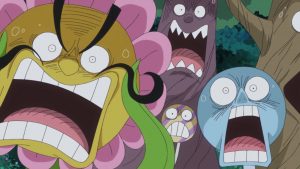 I wouldn’t say that this is very different from any other One Piece arc, but Whole Cake Island in its entirety was very feminine, in the traditional sense. From singing flowers to a tun of brightly colored sweets, it was a huge display of what we’d consider feminine. It’s also something we’ve not seen before in the series. Again, keep in mind that this was originally targeted towards young men. Whole Cake Island was something I would have never guessed to be a One Piece thing. Giant kingdoms full of toy-like people, strange ghost ships or an island plagued by fire and ice? That all seems like One Piece‘s style. But this was something else entirely.
I wouldn’t say that this is very different from any other One Piece arc, but Whole Cake Island in its entirety was very feminine, in the traditional sense. From singing flowers to a tun of brightly colored sweets, it was a huge display of what we’d consider feminine. It’s also something we’ve not seen before in the series. Again, keep in mind that this was originally targeted towards young men. Whole Cake Island was something I would have never guessed to be a One Piece thing. Giant kingdoms full of toy-like people, strange ghost ships or an island plagued by fire and ice? That all seems like One Piece‘s style. But this was something else entirely.
In my personal social groups, I’ve noticed that there’s a lot more women who enjoy One Piece verses men. Of course, that’s just personal observation, not fact; I’m sure every social group is a little different. But it’s nice to see that there was something a little more feminine and female driven in this arc. Do I think that all female arcs should look like this strange, messed up musical? No. But to see a male-driven series suddenly take this turn was super surprising and nice.

Leave a Reply